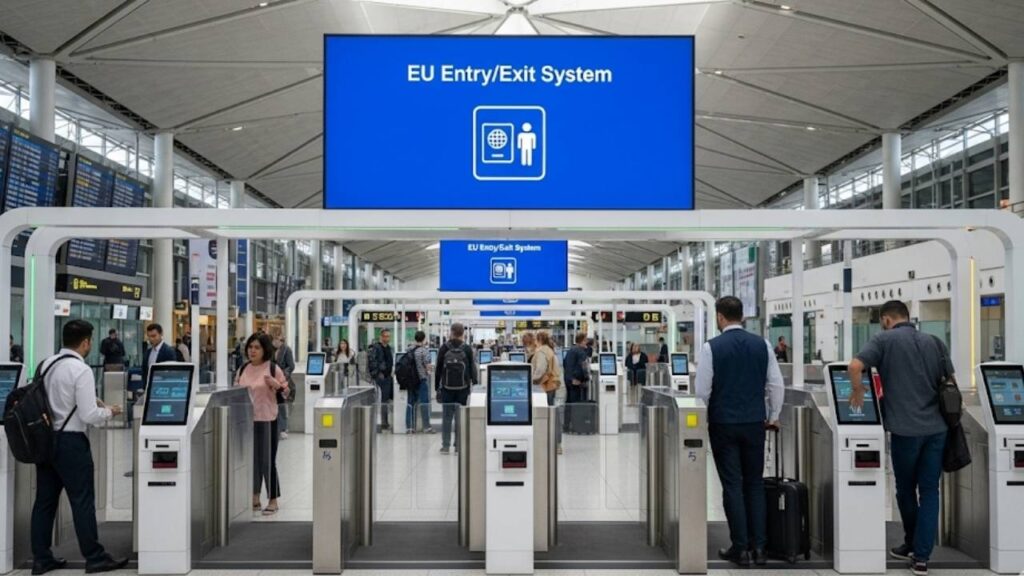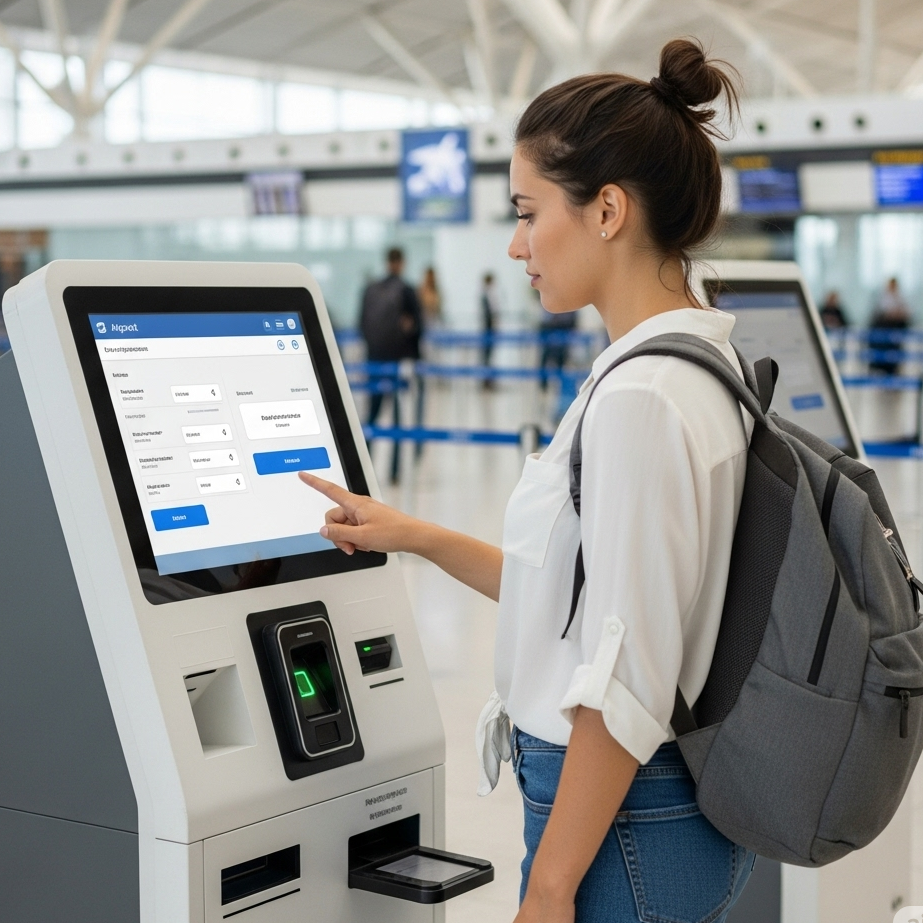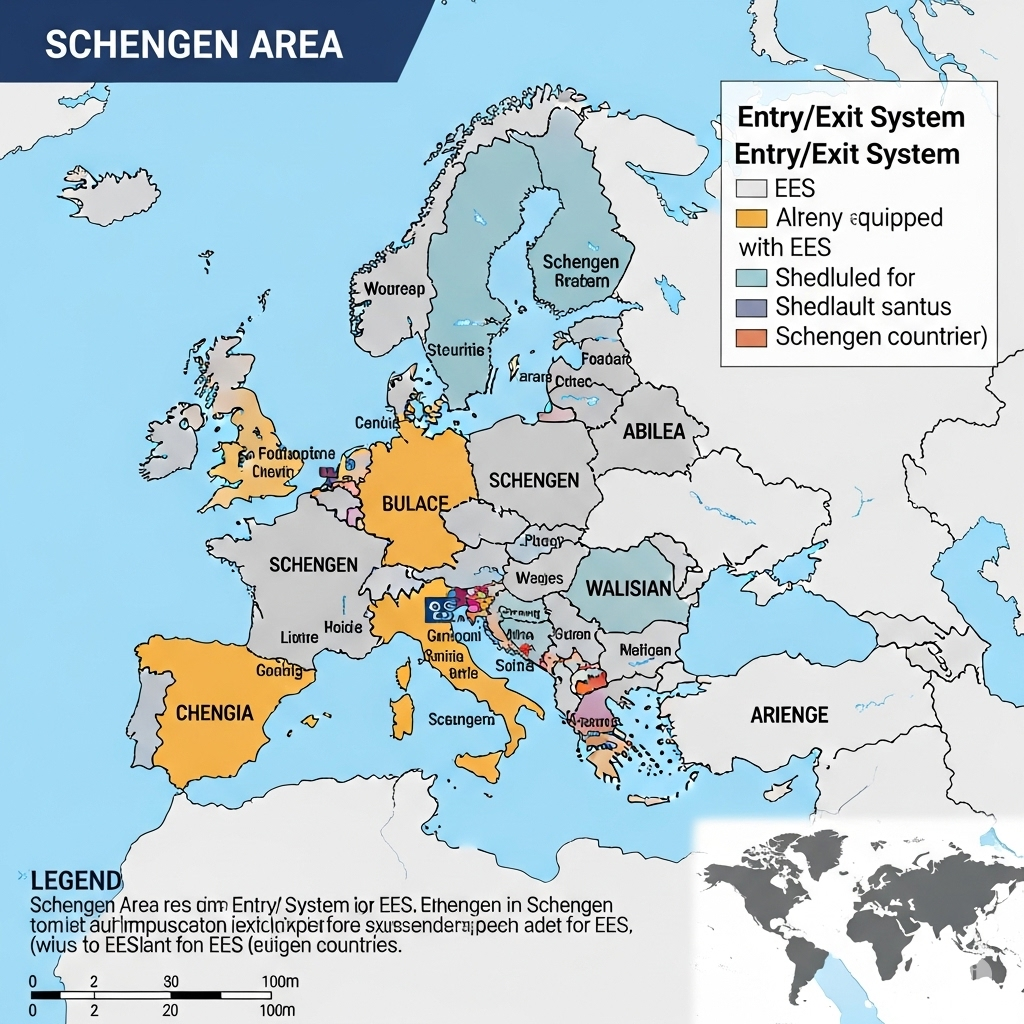EU Entry/Exit System – For anyone dreaming of exploring the charming cobblestone streets of Rome, the vibrant art scene in Berlin, or the breathtaking fjords of Norway, the EU’s new Entry/Exit System (EES) is about to transform your travel experience. As a seasoned traveler and someone passionate about making international journeys seamless, I’ve seen many shifts in global mobility, and this one is a significant leap forward. The European Union has confirmed a six-month phased rollout of the EU Entry/Exit System for Schengen borders in 2025, marking a pivotal moment in how non-EU nationals will enter and exit this popular travel zone. This change is designed to enhance security, streamline border checks, and provide a clearer picture of who is coming and going, ultimately making travel safer and more efficient for everyone.

Gone are the days of manual passport stamps that sometimes leave you playing detective with your entry and exit dates. The EES will usher in a digital era, replacing those ink marks with electronic records and biometric data, including facial scans and fingerprints. This modernization is not just about technology; it’s about optimizing the flow of millions of travelers each year while bolstering the security of the Schengen Area. If you’re a non-EU national planning a short stay in any of the 29 participating Schengen countries, understanding this new system is crucial for a smooth journey.
Navigating the Future of Schengen Travel
| Key Fact | Detail/Statistic | Source |
| Purpose | Replaces passport stamps, tracks short-stay non-EU nationals. | European Union, Migration and Home Affairs |
| Rollout Duration | Six-month phased implementation starting in 2025. | KPMG GMS Flash Alert 2025-101 |
| Biometric Data | Collects facial images and fingerprints on first entry. | Travel Europe, EU FAQs about EES |
| Countries Covered | 29 Schengen countries (excluding Ireland and Cyprus). | Travelobiz, Schengen Travel Update |
The confirmation of the six-month EU Entry/Exit System rollout for Schengen borders in 2025 is a clear signal that the future of European travel is digital. While change can sometimes feel daunting, this evolution promises a more secure, efficient, and ultimately smoother travel experience for non-EU nationals visiting the Schengen Area. By understanding the basics of the EES, being prepared for biometric registration, and staying informed about official announcements, you can confidently navigate these new requirements and continue to enjoy all that Europe has to offer. Start familiarizing yourself with these changes now, and embark on your next European journey with peace of mind.
What is the EU Entry/Exit System (EES)?
The Entry/Exit System (EES) is an automated IT system that will electronically register every border crossing of non-EU nationals, whether they require a visa for short stays or are visa-exempt. Its primary objective is to maintain a digital record of entry and exit dates, ensuring travelers adhere to the “90 days in any 180-day period” rule for short stays within the Schengen Area. This system is a significant upgrade from the traditional manual passport stamping process, which was often time-consuming and less effective in systematically detecting overstayers or cases of identity fraud.
The Phased Rollout: What to Expect in 2025
The decision to implement the EES progressively over six months, rather than an immediate, full launch, reflects a pragmatic approach by the EU. This gradual deployment is intended to prevent IT system overloads and allow both travelers and border authorities ample time to adapt to the new procedures. The European Commission is expected to announce the official start date, after which the six-month transition period will commence.
Here’s a general breakdown of what the phased implementation will look like, though specific dates will be confirmed by the European Commission:
- Month 1: At least 10% of border crossing points will begin utilizing the EES, potentially without full biometric functionalities initially. This initial phase allows for testing and fine-tuning.
- Months 1-2: Biometric checks may be optional at some border crossings, facilitating a softer introduction.
- Month 3: A minimum of 35% of border points are expected to fully implement the EES, including biometric verification.
- Month 6: By the end of this period, the EES should be fully deployed and operational at all external Schengen border crossings.
Who Will Be Affected by the EES?
The EU Entry/Exit System rollout will impact most non-EU nationals traveling to the Schengen Area for short stays. This includes both travelers who need a short-stay visa and those who are visa-exempt (e.g., citizens of the USA, UK, Canada, Australia, etc., who typically enjoy visa-free travel for up to 90 days).
Countries participating in the EES, once fully operational, will include: Austria, Belgium, Bulgaria, Croatia, Czech Republic, Denmark, Estonia, Finland, France, Germany, Greece, Hungary, Iceland, Italy, Latvia, Liechtenstein, Lithuania, Luxembourg, Malta, Netherlands, Norway, Poland, Portugal, Romania, Slovakia, Slovenia,1 Spain, Sweden, and Switzerland. It’s important to note that Ireland and Cyprus are EU member states but are not part of the Schengen Area and will continue with manual passport stamping.
Practical Tips for Travelers: Navigating the New System
My experience advising travelers has taught me that preparation is key to a stress-free journey. Here’s how you can prepare for the EES:
- Be prepared for initial registration: On your first visit to the Schengen Area after the EES launch, you will need to register your biometric details (fingerprints and a facial image). This will likely happen at dedicated kiosks or with a border control officer. While it adds a few minutes to your first entry, subsequent entries within a three-year period should be faster as your digital record will already exist.
- Understand the 90/180-day rule: The EES makes it easier for authorities to track your compliance with this rule. You can utilize the European Commission’s online calculator to monitor your visa-free days. Overstaying can lead to fines, deportation, or future entry bans.
- Factor in potential queue times: While the EES aims to streamline the process in the long run, initial implementation may lead to slightly longer queues as travelers and border officials adjust. Arrive at airports and border crossings with ample time.
- Stay informed: The official start date is still pending, but once announced, it will trigger the six-month rollout. Keep an eye on official EU sources and reputable travel news outlets for updates.
- Check your passport validity: Ensure your passport is valid for at least three months beyond your intended departure date from the Schengen Area.

The Broader Vision: Security and Efficiency
The EES is part of a larger initiative to modernize and secure the EU’s external borders. It works in conjunction with other upcoming systems, such as the European Travel Information and Authorisation System (ETIAS), which is expected to launch in late 2026. While the EES registers entries and exits, ETIAS will be a pre-travel authorization system for visa-exempt travelers, similar to the ESTA in the United States. Together, these systems aim to create a more robust and responsive border management framework.
- Reduce waiting times: Faster processing at border control points, especially with the introduction of self-service systems for biometric passport holders.
- Improve travel convenience: Digital records are less prone to error and loss than manual stamps.
- Strengthen internal security: Better tracking of individuals can help in the fight against serious crime and terrorism.

FAQ
Q1: Will the EES replace the need for a Schengen visa?
A: No, the EES is an IT system for registering border crossings and will not replace the requirement for a Schengen visa for those who need one. It complements visa requirements by digitally tracking stays.
Q2: Do I need to register for EES before my first trip to the Schengen Area?
A: No, you do not need to pre-register. Your data, including biometrics, will be collected upon your first entry into the Schengen Area after the EES is operational.
Q3: How long will my biometric data be stored in the EES?
A: Your personal data will be retained in the EES for as long as necessary for the purpose(s) for which it was collected, and in full compliance with EU data protection rules. Generally, this period is 3 years after your last exit.
Q4: Can I still use my non-biometric passport with the EES?
A: Yes, in principle, both biometric and non-biometric passports will be accepted when crossing borders, provided they are valid and all other entry conditions are fulfilled.










